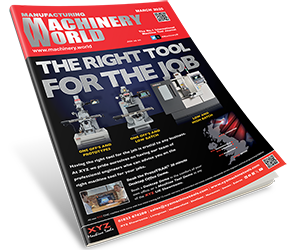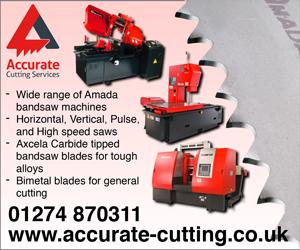Located on the outskirts of Glasgow near Hamilton, The Spark Erosion Centre is a subcontract manufacturer that, as the name suggests specialises in EDM machining. To be a dedicated specialist generally requires two things, staff expertise and the latest technology. Luckily for the Scottish Company, it has both in abundance and it is recognised as UK’s largest customer of EDM machine tool technology.
The company has been in business for over 30 years and it has employed FANUC machine tools from almost day-one. Commenting upon this relationship, Mr Bill Bright, the Managing Director at the Spark Erosion Centre says: “We bought our first FANUC machine back in 1984 and we have stuck with FANUC ever since. This is because we find the machines to be very accurate and reliable products that we push to the limit on a daily basis.”
“By pushing the limits, I am referring to the type and quantity of work that comes through the door. We are stretching what the machines should and shouldn’t be able to do, such as increased tapers that are way beyond what the machine is supposed to be capable of. We have learnt tricks down the years and how to best exploit the capabilities of the FANUC machines and this gives us a major competitive edge.”

Not just a one-trick-pony, The Spark Erosion Centre is a precision machining company that undertakes tool making, injection moulding, tool and jig design and manufacture as well as spark and wire erosion for the offshore, automotive, aerospace, electronics, academic and tool making industries. This diversity is a critical factor for success considering the industrial landscape in Scotland, as Mr Bill Bright says: “The oil & gas industry is a key sector in Scotland but there is still a lot of automotive and tool making work going on. A lot of the local work is overspill from the offshore work in Aberdeen and in recent years most engineering companies felt the impact of the oil & gas downturn. Many companies only worked in the oil & gas industry and when it took a downturn, many companies went under whilst others had to fight for whatever they could. Fortunately for us, we operate in a variety of sectors and we have niche areas of expertise that ensure a stable business.”
An example of this expertise can be noted on an oil & gas industry cylinder that was turned by a customer of the Spark Erosion Centre. The turned cylinder is intended to be an offshore collet and the customer approached the Spark Erosion Centre to split the cylinder via wire EDM processes to create a collet assembly. Commenting on this component, Mr Bright recalls: “We received the first component and it wasn’t stress relieved and this is where wire erosion is a benefit, as it has no forces involved in the process. We wire cut the first part and it sprang quite badly. On future components, we recommended stress relieving the parts and the customer asked us to handle the entire process.” It is this expertise and capability that has made the ISO: 9001 company such as success.
“We utilise the core stitch function to machine from the centre of the part to the outside. However, we do not machine all the way through the part, leaving a ‘tag’ like on an Airfix model. This keeps the cylinder in an assembled condition and allows the customer to just break-off the parts during final assembly.”
Referring to the FANUC relationship, Mr Bright says: “We have a range of machines now and we tend to trade-in as we get new machines, but we still have machines up to 10 years old that still perform extremely well. The reliability is there and we have been working with FANUC machines for so long that we can now undertake a lot of our own maintenance and repairs, but the support from FANUC has always been there as soon as we need it.”

Categorically a major believer in FANUC technology, the company has once again invested in FANUC with the recent arrival of a ROBOCUT C600 iB wire erosion machine. Commenting on this acquisition, Mr Bright says: “This machine is right on the sweet spot for us, we have both smaller and larger machines and as a new machine, this gives us the X & Y axis capability we wanted. It has an extra 100mm in the Z-axis, which takes the Z-axis to 400mm and this gives is a niche. There is certainly work that comes to us that cannot be done by anyone else in the area and this is credit to the generous Z-axis capability on the FANUC.”
Sitting alongside a previous generation FANUC ROBOCUT C600 A-Series, the new C600 B-Series addition has a multitude of new features that are not integrated into previous generation machines. Commenting on this, Mr Bright says: “The new touch-screen CNC control unit is a new feature that is very easy to work with as ‘touch-screen’ has become a familiar part of everyday life – who doesn’t have a touch-screen phone nowadays? Added to this, the control unit is also far more capable than previous generations.”
FANUC has made significant strides down the route of machine efficiency, power consumption rates, automation and precision in recent years and mentioning this, Mr Bright comments: “Our customers are very demanding and they want parts back as soon as possible, so energy efficiency isn’t the top of our consideration list. However, when it comes to precision, we have done a lot of intricate R&D work and the machines have been spot-on. Additionally, automation is a core factor, so our machines have to be auto-wire fed. This is something we now take for granted because in the modern competitive market, we have to maximise the running time of our machines.”







